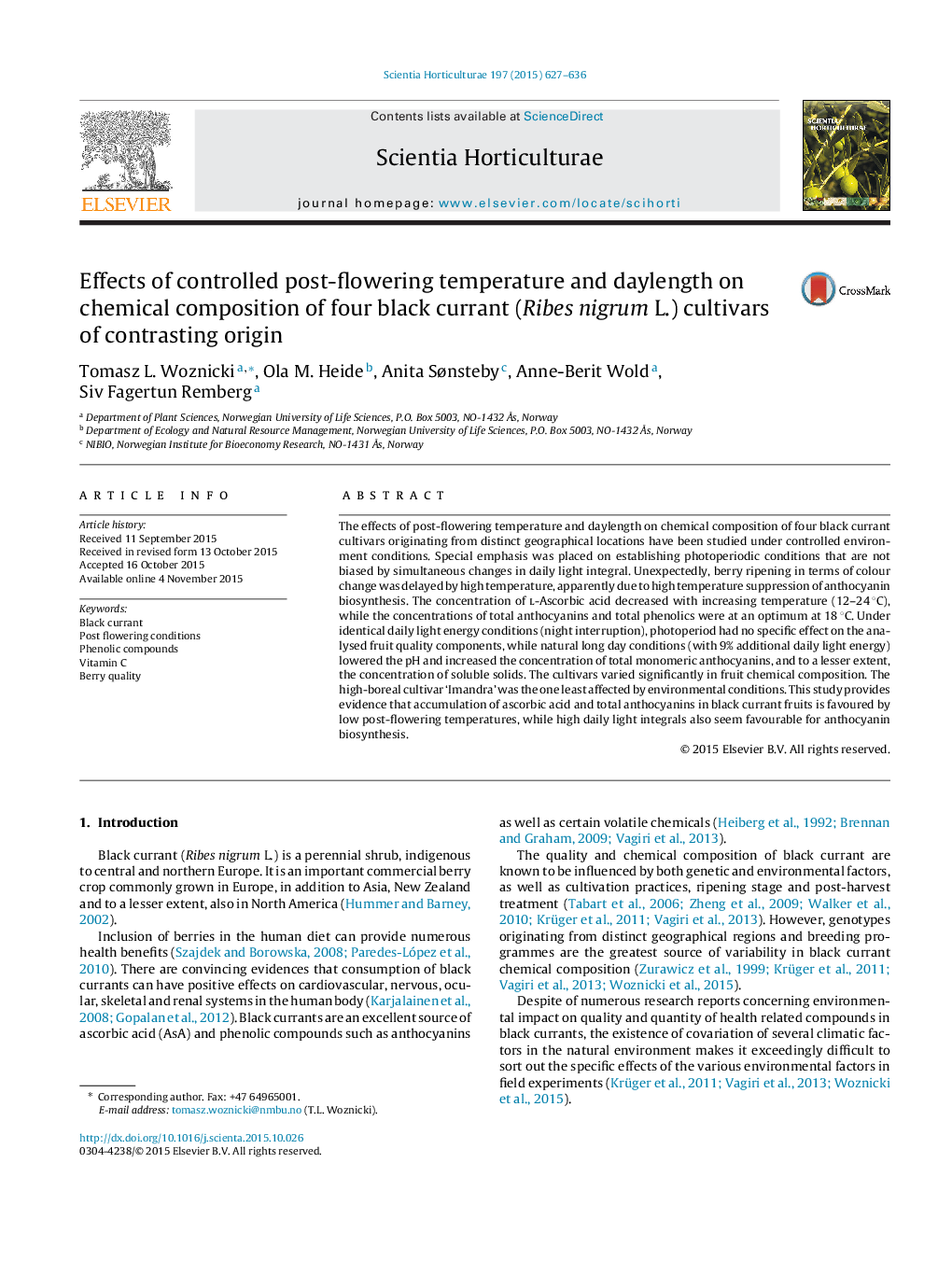| Article ID | Journal | Published Year | Pages | File Type |
|---|---|---|---|---|
| 6406912 | Scientia Horticulturae | 2015 | 10 Pages |
Abstract
The effects of post-flowering temperature and daylength on chemical composition of four black currant cultivars originating from distinct geographical locations have been studied under controlled environment conditions. Special emphasis was placed on establishing photoperiodic conditions that are not biased by simultaneous changes in daily light integral. Unexpectedly, berry ripening in terms of colour change was delayed by high temperature, apparently due to high temperature suppression of anthocyanin biosynthesis. The concentration of l-Ascorbic acid decreased with increasing temperature (12-24 °C), while the concentrations of total anthocyanins and total phenolics were at an optimum at 18 °C. Under identical daily light energy conditions (night interruption), photoperiod had no specific effect on the analysed fruit quality components, while natural long day conditions (with 9% additional daily light energy) lowered the pH and increased the concentration of total monomeric anthocyanins, and to a lesser extent, the concentration of soluble solids. The cultivars varied significantly in fruit chemical composition. The high-boreal cultivar 'Imandra' was the one least affected by environmental conditions. This study provides evidence that accumulation of ascorbic acid and total anthocyanins in black currant fruits is favoured by low post-flowering temperatures, while high daily light integrals also seem favourable for anthocyanin biosynthesis.
Related Topics
Life Sciences
Agricultural and Biological Sciences
Horticulture
Authors
Tomasz L. Woznicki, Ola M. Heide, Anita Sønsteby, Anne-Berit Wold, Siv Fagertun Remberg,
